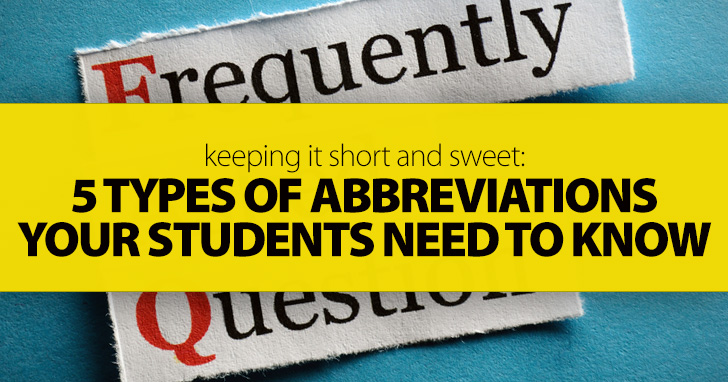9 Best Tips to Give ESL Students for Professional Business Emails


I’ll never forget the moment I learned how true this is. I was teaching at a university ESL program, instructing business students one on one. In the next room was another teacher who was doing the same. He and his student walked into my classroom and asked for a moment of my time. The other teacher proceeded to give me one abbreviation after another and asked me to share what they stood for. After a few of my answers, his student conceded. They explained that his student didn’t believe that English speakers knew as many abbreviations as my coworker was teaching his student, and I had proved the teacher right by explaining what just a few of the abbreviations on his list stood for. Another thing I realized through that experience was that ESL teachers shouldn’t wait till their students have reached the advanced level before teaching them abbreviations, shortened forms of longer words, as we often do. We educators need to include English abbreviations wherever they logically fit throughout our ESL instruction programs, and that doesn’t mean waiting till our students reach the advanced level before bringing up the idea.

Often we encounter abbreviations when we see written names of people. Mr. and Mrs. (mister and misses) are perhaps the first abbreviations that English language learners encounter and are taught. When you do teach these and other terms of address, be sure to point out to your students that Miss is not an abbreviation but a word unto itself. In addition, Ms., though it follows the convention of Mr. and Mrs., is not an abbreviation even though it is often treated as one. Abbreviations often follow a person’s name as well. Not only will your students see Jr. and Sr. (junior and senior) after names, but they will also see abbreviations such as Ph.D. (doctor of philosophy), M.D. (medical doctor), B.S.N. (Bachelor of Science, nursing), etc. There is some disagreement whether these abbreviations should be written with periods or not, so how you teach your students is a matter of personal preference. It might also be worth mentioning to your students that some very famous people sometimes have their entire name abbreviated, such as LBJ, JFK, or MLK.
Have you taught your students how to address letters and envelopes? If so, you have probably talked about the abbreviations used for places around the world. In the U.S., we use standard two letter abbreviations for states (NY, CA, and FL for example). These are written without periods. We also use abbreviations for various countries including the U.S.A. and the U.K. These are written using periods. You can find a list of standard two and three letter abbreviations for the nations of the world here.
Scientific abbreviations may already be familiar to your students since some of them are used across cultures. You will find abbreviations for the scientific elements and compounds (Cl, Ag, H2O, etc) as well as units of measurement (M, Kg, Lb., etc.) wherever you go. If your students don’t already know these often international abbreviations, take some time to review them with your class. They tie in great to a unit on jobs or science readings.
As you teach your standard vocabulary units, you are likely to encounter abbreviations for common objects (VCR, CD, TV, etc.), and teaching them along with the full vocabulary words is probably best for your students. You will also encounter abbreviations for common phrases as you teach the units on your syllabus. When terms like mph, mpg, and IQ come up in your units, take a minute to explain what they are abbreviations for. You will also find yourself teaching abbreviations that relate to time (B.C., A.M., etc.), and those are best taught as they come up in your regular units.
Texting abbreviations are shortened forms of common words and phrases that gained popular use in recent years such as ttyl8r (talk to you later) and lol (laugh out loud). If you decide to teach your students some popular texting abbreviations, check out this list of the most common ones. Though these abbreviations may not be as common or as important as the others your students will need to know, they will if nothing else provide your students will a fun code for expressing the English language.
Memory is a great game for practicing abbreviations with your students. Make a set of two cards for each abbreviation you plan on reviewing, one card with the abbreviation and another with the entire word. Have students lay them all out face down on a table and turn over two cards at a time looking for a match.
Go fish is another game that is great for matching abbreviations to their complete words. You can use the same cards that you made for your memory game to have students match their abbreviations correctly.
To practice text abbreviations with your students, try giving them a short text written in abbreviations and ask your students to write it out longhand. You could also give them an entire conversation written in abbreviations or ask students to write a conversation using specific texting abbreviations.
You can do an abbreviation sort with your students to help them remember specific abbreviations and what they stand for. Give your students a random list of abbreviations used for people, places, scientific words, and texts. Have students cut each abbreviation and sort it into the correct category. You might want to provide students with a second sheet of paper with a circle labeled for each category of abbreviations and have them glue the abbreviations into the appropriate circle as they sort.
Acronyms may seem like abbreviations, and you can often teach them in similar ways, but technically they are not abbreviations but something else entirely. Whereas an abbreviation is a shortened form of a word or words, an acronym is a “word” made up from the first letters of the words in a phrase. NATO, for example, is an acronym for the North Atlantic Treaty Organization, but we treat is like a unique word in English. Likewise, laser is an acronym (light amplification by stimulated emition of radiation) which has become part of the English lexicon. These acronyms are pronounced as words, and that is what makes them acronyms. If English speakers pronounced them as individual letters, such as FBI, they would be abbreviations. Sometimes an acronym can become an abbreviation or vice versa. One such example is URL, which stands for Uniform Resource Locator. If the letters are pronounced individually, it is an abbreviation (U-R-L), but if the three letters are pronounced as a “word” (“earl”) it is an acronym.
It’s not important that your students can explain the difference between an acronym and an abbreviation. What is important is that they know which words to pronounce as letters (abbreviations) and which to pronounce as words (acronyms). As you teach abbreviations and acronyms, be sure to point out not only how they are written but also how they are pronounced so your students will know how to use them when they are speaking English in the real world.
Or do you wait until your students have reached a certain level of language proficiency before teaching abbreviations?